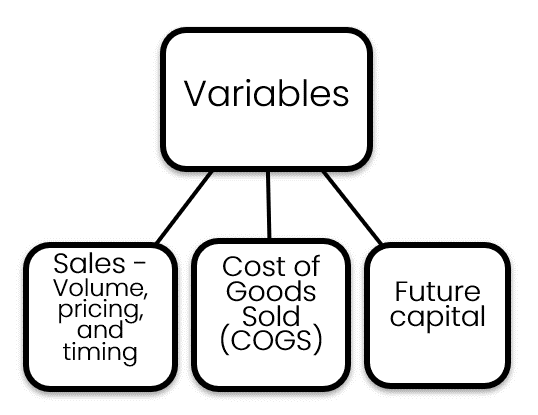Sensitivity Analysis key in startup financial projections

No one can predict the future and it’s especially true in the startup world.
The statistics show that even though most founders bet their time and resources that their startups will be the best in the world, 90% of those new startups won’t be in operation in 10-15 years.
This means that even though founders invest many years of their life studying markets and building their companies, and even though experienced investors pour billions of dollars into startups every year, 90% of the bets are wrong.
For startups, this is the precise reason why sensitivity analysis is essential.
For investors, it’s about measuring and managing the risk profile which enables return optimisation.
Sensitivity Analysis: “What if my assumptions are wrong?”
Sensitivity analysis is a financial modeling tool used to analyse how changes in the value of one or more independent variables would affect other dependent variables.
For example, “How will unit cost affect our capital requirements and how will product pricing affect revenue?”
The Steps in Sensitivity Analysis:
Figure out the variables
Which variables are going to have the most impact on your startup’s financials?
Create clear scenarios
Define ‘Expected Case’, ‘Worst Case’ and ‘Best Case’. It isn’t good enough to just say ‘what does halving my revenue do to the business?’ A much better analysis would be ‘if we do not secure this distribution agreement, the market share we can achieve by this date will be halved.’
Quantify the impact
What is the impact of these change in variables through the range of scenarios?
Create and adapt your strategic plan
Based on the scenarios with the greatest impact on the business, create/adapt your strategic plans. For instance, if a product price changes by 5% and leads to a 20% change in the bottom line, this variable would require close attention from founders to manage properly.
Key Variables to Consider:

Sales units
Founders are typically ambitious when projecting sales volumes. Some common drivers of sales underperformance include product-market fit challenges, slow/low sales channels, and poor execution. To identify sensitivities here, you need to comprehensively challenge your assumptions about demand, sales cycles, etc. What if the number of sales is much less than expected? What is the plan to respond to this?
Pricing
This is one of the most important decisions by founders and probably one of the hardest. What if a product can only be sold at a much lower price? What are the implications of sales in particular, and startups’ financials in general?
Timing of sales
It often takes a lot of time for a startup to educate the market about its new product and to reach the product-market fit, which is when sales can begin to grow exponentially. What if sales are delayed by 3 months, 6 months, or 1 year? What does this mean for the capital pathway?
Cost of goods sold (COGS)
This is more important to startups that are in the pre-revenue phase, when products are under development. As for any other expense, COGS is often underestimated. There are often still a lot of unknowns that have a significant impact on COGS (e.g. manufacturing model: outsourced or in-house). COGS has a direct and big impact on profitability and can drive pricing strategy so it is an area where founders should take a very conservative approach. What if COGS is underestimated by 10%, 20% or 30%?
Capital
Capital is a limited resource and it is quite common to see startups fail to raise needed capital. What are the likely impacts if less capital is raised? How would the business model and financial change because of it?
Other variables include major expenses of startups such as salaries, sales & marketing , etc.
What Happens When You Don’t Do Sensitivity Analysis?
A financial plan without a sensitivity analysis might result in:
Overestimating sales without a contingency plan
If a startup expects $1M in sales revenue but only gets $100k and they haven’t got a backup plan, they may face a down round or in the worst case liquidity concerns.
Underestimating costs
Unexpected costs should be expected. Even with a contingency budget, this can put pressure on having enough cash in the bank to achieve important milestones.
Timing (of sales and costs)
As a rule of thumb, investors double your time and double your cost – it is very rare that a startup’s estimations of time and cost prove accurate, and they are seldom less than projected.
Summary
Most startups don’t carry out sensitivity analysis but it is a crucial exercise to do on a regular basis. Done frequently this analysis will mean founders always have a backup plan that can save their companies when things go south.
By building a solid financial plan for startups (with some room to adjust to risks), companies can put themselves in the best possible position to weather those external storms.








